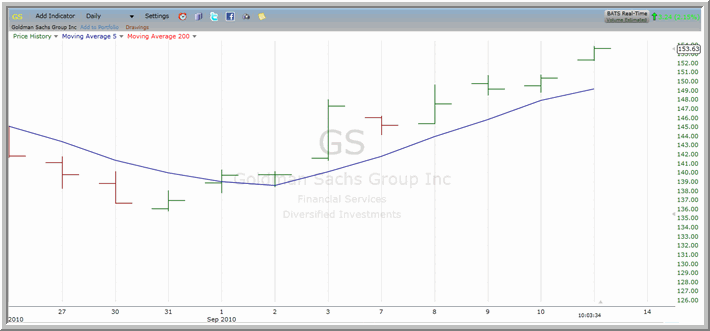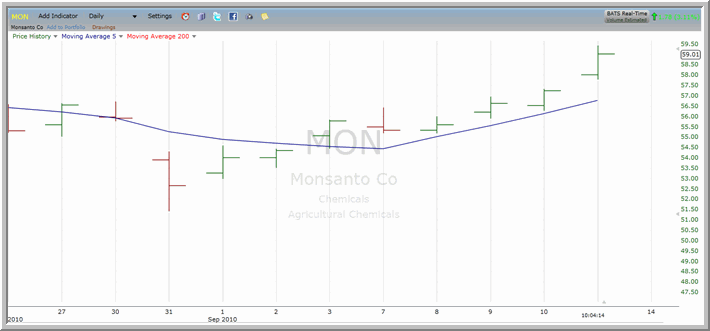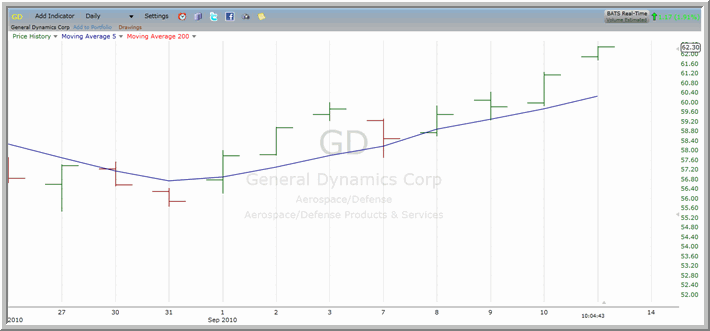Short Term Trading Strategies That Work: The Temptation of Buying Overbought Markets (SPY, GS, MON, GD, QQQQ)
If you are feeling more confident about buying stocks now that the S&P 500 (using the ^SPY^) and the Nasdaq 100 (or ^QQQQ^) has closed higher for six or seven trading days out of the past eight, then Larry Connors’ second rule for short term trading success, published in the book, Short Term Trading Strategies That Work, is for you:
Rule #2:
Buy the Market After It’s Dropped – Not After It’s Risen
As Larry wrote:
“After the market has risen, everyone is jumping up and down and telling you how good things are and why prices are likely going higher …
As most of us have seen, these people are usually wrong. Why? Because as we just saw in the previous chapter they are only repeating what the market already knows. And the market has already factored in much of the good news (that’s why it has risen) …”

This isn’t just anecdotal observation on Larry’s part. This is stock and ETF price data that has been quantified over more than a decade and led to the conclusion he makes latter in the chapter – a conclusion borne out by the success of everything from Ultimate PowerRatings and High Probability ETF Trading to, most recently, The Machine® (to read a fascinating interview with an investment advisor currently using The Machine, click here).
“How do you profit from this information?” Larry writes. “By not buying the market or a stock right after it’s risen a number of days in a row, and not selling (or shorting) a stock after it has dropped a number of days in a row.”

This can be very difficult to do psychologically. When markets and individual stocks are making new highs, the temptation to buy them can be irresistible. The news is good. The financial pundits love the stock. What could go wrong?
According to the data, this more often than not, from Short Term Trading Strategies That Work:
“From 1995-2007, after the S&P 500 has risen three days in a row, it has on average lost money over the next five trading days.”

Keep this in mind the next time you look at a stock that is making new high after new high after new high. If it is a stock that you are interesting in buying for a trade, the data suggests that you’ll likely have better luck in the short term if you wait for the stock to pullback before buying rather than chasing the stock higher.
Short Term Trading Strategies That Work Trading Tip:
If buying overbought markets that are closing higher day after day is a bad idea for short term traders, then buying overbought markets that are trading below the 200-day moving average is an even worse idea. Note that all three of the stocks shown in the charts above: ^GS^, ^MON^ and ^GD^ are all overbought below the 200-day moving average and best avoided – or sold short.
An excellent, objective rule of thumb for short term traders is this: Only buy oversold markets trading above the 200-day moving average and only sell short overboughts markets trading below the 200-day moving average.
With 16 backtested strategies for trading bull markets, bear markets and sideways markets, Short Term Trading Strategies That Work by Larry Connors and Cesar Alvarez may be the most important trading book you read this year. Click here to order your copy of Short Term Trading Strategies That Work today.
David Penn is Editor in Chief at TradingMarkets.com.
